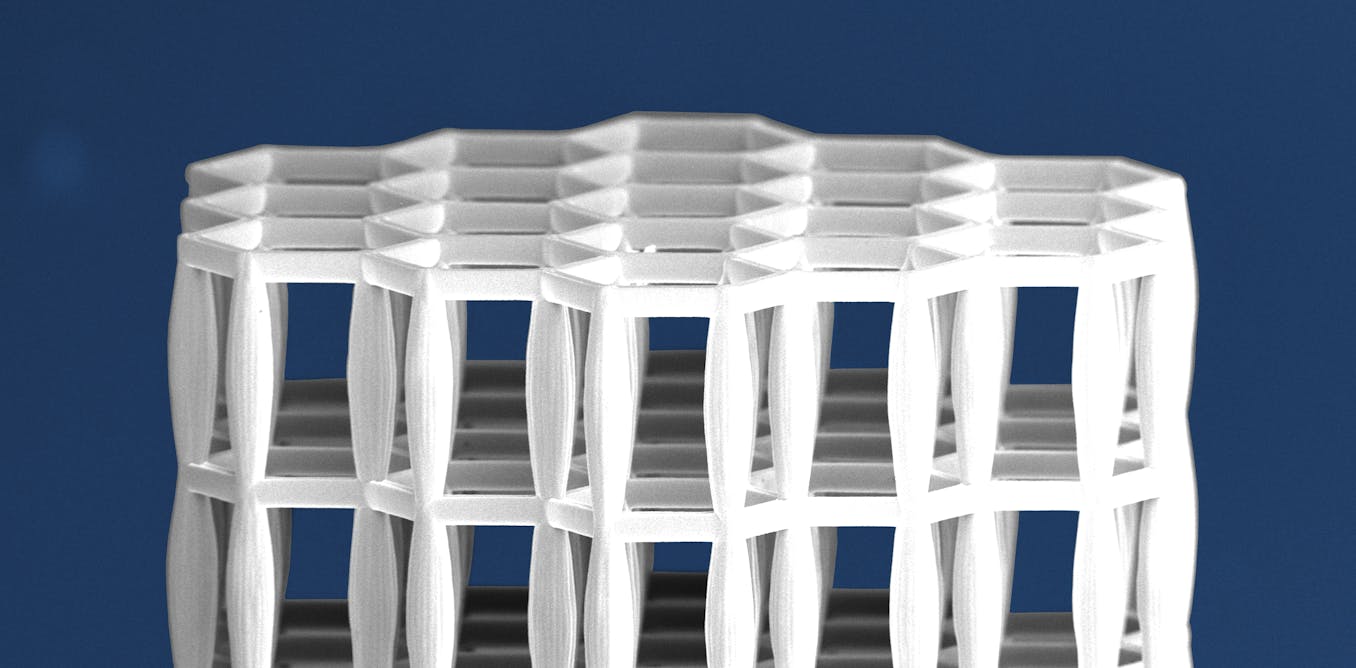Man-made Materials as strong as steel but lighter than water If the 20th century was the Aluminium Age (some say the Age of Plastics), then 21st is likely to be the Molecular Age, with materials like graphene, buckyball fullerenes, aerogels, "cloaking" materials, and much more being invented & investigated in labs around the world (see references below). The upsurge in new materials is driven by the increased ability of materials scientists to manipulate the nano-structures of materials, i.e. to arrange individual molecules or even atoms.
Take for example this article's "aluminium polymer with a bone-like structure". In 2014, scientists in Germany (Karlsruhe Inst. of Tech) used a high precision laser and a polymer that reacts to light to create the honeycomb structure which, after being coated with aluminium oxide, leaves a material that is as strong as steel but, being porous, is less dense than water.
The process is currently experimental, and can only create material samples on the scale of a millimetre.
Changes in materials are coming, as 3D printing technologies improve and traditional designs are infused/replaced with exotic source materials.
Notes
"Ages" of material science:
1/ Stone Age (stone, wood, bone, clay),
2/ Copper,
3/ Bronze (Copper + Tin),
4/ Iron,
5/ Steel (Iron + carbon, or other alloy)
6/ Glass,
7/ Porcelain,
8/ Synthetic Polymers (aka Plastics),
9/ Aluminium Alloys,
10/ Ceramics & Silicon semiconductors (for computers and space shuttle heat filters),
11/ Nano-materials (fullerenes, graphene aerogel, ...)
References:
[0] This article. Source: The Conversation, Feb 2014, Akshat Rathi
http://theconversation.com/scientists-create-bone-like-material-that-is-lighter-than-water-but-as-strong-as-steel-22729
[1] Graphene: a single atomic layer of carbon with disruptive properties
a) The remarkable potential of Graphene :
https://www.newyorker.com/magazine/2014/12/22/material-question
b) Graphene Explained:
http://www.explainthatstuff.com/graphene.html
[2] Buckminster Fullerase, a geodesic shaped carbon nanotube structure discovered in the late 1980s
https://www.scientificamerican.com/article/have-buckminsterfullerene/
[3] History of Plastics (aka synthetic polymers) invented as a replacement for ivory billiard balls
https://www.sciencehistory.org/the-history-and-future-of-plastics
[4] History of Glass
http://www.historyofglass.com/
[5] Invisibility Cloaking -- going one step further in controlling scattering
a) New cloaking materials
https://www.sciencedaily.com/releases/2017/09/170913104506.htm
b) Next steps in "stealth" (radar absorbing) materials -
https://phys.org/news/2015-01-cheaper-simpler-radar-absorbent-material.html
[6] History of Steel:
http://www.worldsteel.org/steelstory/
Scientists create bone-like material that is lighter than water but as strong as steel
